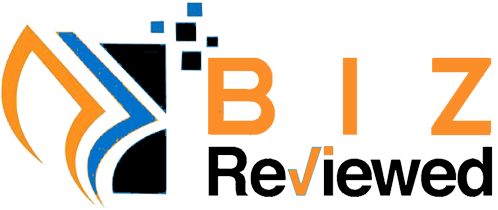collaboration : In today’s fast-paced professional landscape, the path to success is rarely a straight line. As industries evolve and competition increases, continuous growth becomes essential. Enter duaction—a unique blend of dual action that focuses on both acquiring knowledge and applying it in real-world scenarios. This innovative approach not only enhances individual skills but also fosters collaborative learning within organizations.
Imagine a workplace where every employee actively engages in personal development while contributing to team goals. That’s the magic of duaction! It’s more than just training; it’s an ongoing journey toward excellence. Join us as we explore how this dynamic concept can transform careers, boost motivation, and ultimately lead to greater professional fulfillment.
Defining Duaction and its Importance in Professional Development
Duation is a transformative approach that combines dual learning methods: theory and practice. It encourages professionals to not only absorb information but also apply it in real-world situations. This synergy accelerates skill development and enhances understanding.
The importance of duaction in professional development cannot be overstated. In an era where knowledge alone isn’t enough, the ability to implement skills effectively sets individuals apart. Duation cultivates adaptability, equipping employees with tools to navigate challenges confidently.
Moreover, this method promotes collaboration among team members. When everyone engages in shared learning experiences, organizations foster a culture of continuous improvement. Employees thrive when they feel supported in their growth journey.
Embracing duaction empowers professionals to take charge of their careers while driving organizational success forward.
The History and Evolution of Duaction
Duaction has its roots in the early 21st century, where traditional learning methods began to blend with modern technology. As workplaces evolved, so did the need for continuous development.
Initially focused on formal training programs, duaction gradually incorporated informal learning through peer interactions and mentorships. This shift allowed employees to take charge of their growth while fostering a collaborative environment.
With the rise of digital platforms, duaction expanded significantly. Online resources made it easier for professionals to engage in self-directed learning alongside structured courses.
As companies recognized the value of employee engagement and skill enhancement, they embraced this dual approach. Today, duaction is a staple in professional development strategies worldwide, reflecting an understanding that talent thrives best when nurtured through multiple avenues simultaneously.
How Duaction Enhances Career Growth and Advancement
Duation plays a pivotal role in shaping career trajectories. It empowers professionals to align their skills with industry demands, ensuring they remain relevant.
Through continuous learning and practical experience, individuals can acquire new competencies. This process boosts confidence and opens up paths for advancement that may have seemed out of reach before.
Networking opportunities often arise from duaction initiatives as well. Connecting with mentors or peers fosters relationships that can lead to job offers or collaborations.
Moreover, those engaged in duaction tend to exhibit greater adaptability. In an ever-evolving workplace, this flexibility is invaluable for navigating challenges and seizing unexpected opportunities.
Employers recognize the benefits too; investing in employee development through duaction enhances workforce morale while driving organizational success. The result? A win-win scenario where both employees and employers thrive side by side.
Real-Life Examples of Successful Duaction Implementation
Companies worldwide are embracing duaction to foster employee growth. One notable example is Google, where employees engage in peer-to-peer learning sessions. This initiative encourages collaboration and knowledge sharing.
At IBM, a structured mentorship program pairs experienced professionals with newer team members. The result? Enhanced skills and accelerated career paths for mentees.
In the healthcare sector, Mayo Clinic has implemented duaction through interdisciplinary teams. Medical staff from various specialties work together on complex cases, promoting diverse perspectives and approaches to patient care.
These examples illustrate that when organizations prioritize duaction, they not only invest in their workforce but also create an environment ripe for innovation and progress. Employees feel empowered to learn from one another while enhancing their individual capabilities within a supportive community.
The Role of Employers in Supporting Duaction for Employees
Employers play a crucial role in fostering duaction within their organizations. By recognizing the value of continuous learning and dual-action strategies, they create an environment conducive to growth.
Support can come in various forms. Offering flexible schedules allows employees to pursue education while managing work responsibilities. Mentorship programs also encourage knowledge sharing between experienced staff and newcomers.
Providing access to resources is essential as well. This includes workshops, online courses, or industry conferences that promote skill development. Employers who invest in these opportunities signal their commitment to employee advancement.
Encouragement from leadership boosts morale too. Regular discussions about career aspirations help align individual goals with organizational objectives. Such alignment enhances job satisfaction and productivity.
When employers actively support duaction initiatives, they cultivate a workforce that’s engaged and equipped for future challenges.
Tools and Resources for Effective Duaction in Professional Development
To maximize duaction in professional development, leveraging the right tools is essential. Online platforms like LinkedIn Learning and Coursera offer courses that cater to various skills. These resources allow individuals to learn at their own pace while integrating practical knowledge into their work.
Collaboration tools such as Slack and Microsoft Teams can enhance communication among peers engaged in duaction initiatives. They foster an environment of shared learning and support, making it easier to exchange ideas.
Mentorship apps like Mentorcliq connect employees with experienced professionals for personalized guidance. This relationship can significantly boost skill acquisition through real-world insights.
Additionally, tracking progress using goal-setting software aids in maintaining motivation. Tools like Trello or Asana help create actionable plans tailored to personal growth objectives within the framework of duaction initiatives.
Overcoming Challenges and Obstacles in Implementing Duaction Programs
Implementing duaction programs can come with its share of challenges. One common hurdle is resistance to change within an organization. Employees may feel comfortable in their current roles and hesitant to embrace new learning opportunities.
Another obstacle is the lack of resources. Companies often struggle with budgeting for training and development initiatives, which can lead to limited duaction offerings. This limitation can hinder employee participation and engagement.
Additionally, ensuring alignment between individual goals and organizational objectives is crucial but often overlooked. Misalignment might result in wasted time and effort if participants do not see how their development translates into real-world benefits.
Creating a culture that values continuous learning also takes time. Encouraging employees to view duaction as an integral part of their career growth requires persistent communication from leadership about its importance.
By addressing these issues head-on, organizations can pave the way for more successful implementation of duaction programs.
Measuring the Impact of Duaction on Career Success
Measuring the impact of duaction on career success is a critical step in understanding its value. Organizations that implement duaction programs often track various metrics to evaluate effectiveness. These can include employee satisfaction, retention rates, and overall performance improvements.
Surveys and feedback from participants provide insight into how duaction has influenced their skills and confidence levels. Many companies also monitor promotions and salary increases among employees engaged in ongoing development through duaction initiatives.
Additionally, analyzing productivity data before and after implementing these programs can reveal significant changes. When employees feel empowered through continuous learning, they tend to contribute more effectively to team goals.
Case studies illustrate the benefits as well. Companies that have embraced duaction report higher engagement scores and greater innovation among teams. Employees who participate actively in such programs are often seen as leaders within their organizations.
The long-term effects of investing in professional development through duaction become evident over time. As individuals grow both personally and professionally, they bring new perspectives back to their roles—ultimately driving organizational success forward.
Understanding these impacts not only reinforces the importance of effective duaction but also encourages businesses to continue fostering environments where lifelong learning thrives. This investment pays off not just for individual careers but also for the health of the entire organization.






